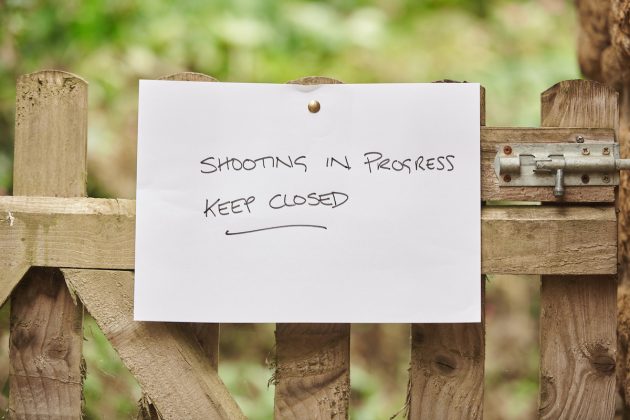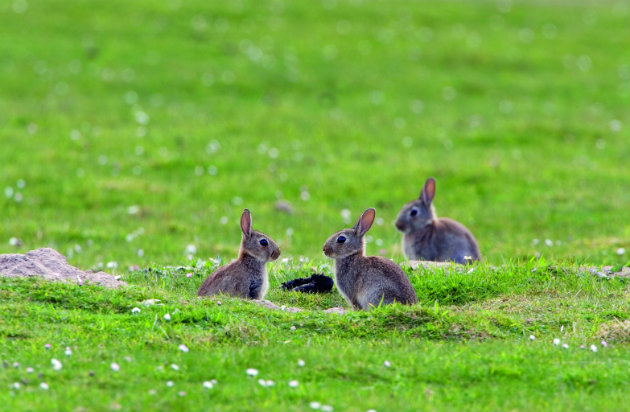It is legal to shoot an air rifle in your back garden providing you follow the rules. Garden airgunning is…
Win CENS ProFlex DX5 earplugs worth £1,149 – enter here
What happens when you use an imitation owl to lure crows and magpies?
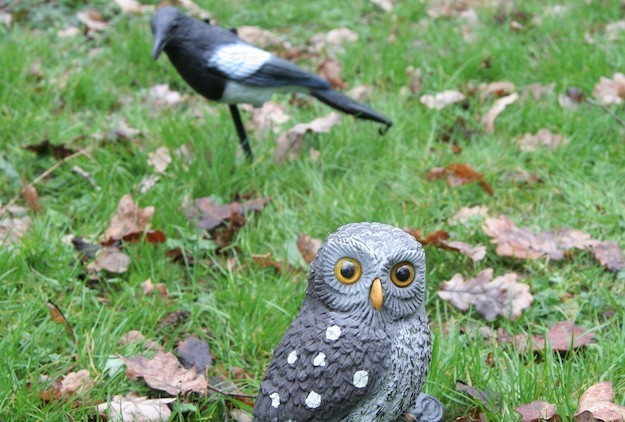 Mat sets up an imitation little owl with a magpie decoy looking on for added attraction.
Mat sets up an imitation little owl with a magpie decoy looking on for added attraction.
Corvid control with an air rifle can be unpredictable. There are days when the quiet stealth of a moderated airgun can be a real asset, enabling you to pick off countless birds before they wise up to what’s going on.
And, of course, there are plenty of times when suspicious crows and magpies flatly refuse to present a static target. You find yourself wishing you’d taken the less subtle approach and brought along a shotgun to pull them out of the sky as they circle above the decoys. If there is a time when airgun shooters can expect to enjoy less difficult, if not entirely easy, action with corvids, it’s usually during the spring.
Vulnerable
At this time of year, songbirds and game birds are busy nesting and crows and magpies quickly learn that their eggs and chicks offer a ready, and very nutritious, food source. The sudden glut of easy pickings can cause greedy corvids to drop their guard. I’ve accounted for hundreds of them over the years by nestling two hens’ eggs into a twist of dry stems to create what looks like a vulnerable nest.
By placing this imitation nest and one or two decoys in an open spot — such as a field that’s flanked by woodland — then tucking myself away in a discreet hide, it’s usually possible to draw egg-stealing corvids close enough to nail them with an airgun.
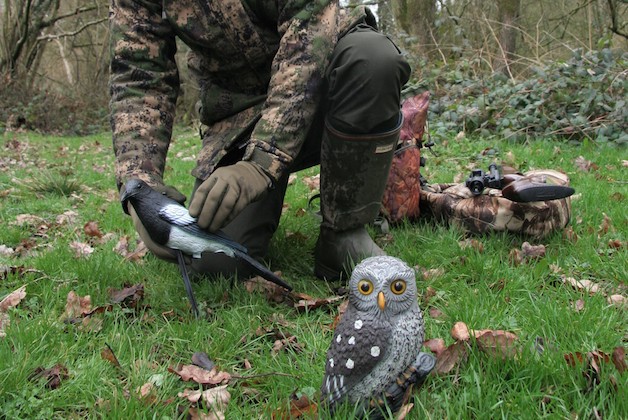
Mat sets up an imitation little owl with a magpie decoy looking on for added attraction.
But it’s not just eggs that can stir up interest from crows and magpies during the spring. These birds are fiercely territorial, especially at this time of year. Though they think nothing of helping themselves to the contents of other birds’ nests, they tend to react angrily when a perceived threat crops up close to their own nesting site. For this reason, I usually keep an owl decoy in my backpack when I’m out and about on my springtime rounds.
My latest session on the corvids was an impromptu one. I was roaming one of my woodland permissions looking for places to site squirrel feeders when I happened across a group of four magpies. Stalking these ultra-wary birds seldom ends in success and, sure enough, they’d all cleared off before I was anywhere near close enough for a shot. Interestingly, though, they didn’t back away very far.
I couldn’t see them but I could hear them chattering nearby so I decided to stop and wait for a while in case they decided to make a return. Slightly unprepared, I didn’t have a hide net with me so was going to have to rely on natural cover. That wasn’t necessarily a bad thing; the disturbance caused by constructing a hide could have pushed the birds further away and would almost certainly have made them even more suspicious of me.
Little owl decoys
Another advantage of using the existing cover rather than creating your own is the fact that you’re not introducing anything new to the surrounding landscape, which always risks creating suspicion from sharp-eyed birds. Before I settled in, I set up a little owl decoy about 25m from my hiding place. I have used all sorts of imitation owls to provoke an angry reaction from corvids. Little owls seem to be best, especially when targeting magpies. Bigger decoys are more eye-catching but they can sometimes appear too threatening, with the result that birds stay too far back rather than bundling in to barrack the intruding raptor.
In my experience, they tend to feel more confident about bullying a little owl, and one with piercing black-and-yellow eyes will generally wind them up. The diminutive decoy is less conspicuous but I get round that by placing an imitation magpie nearby. Its black-and-white markings rarely go unnoticed and its presence gives the impression of a mobbing in progress.
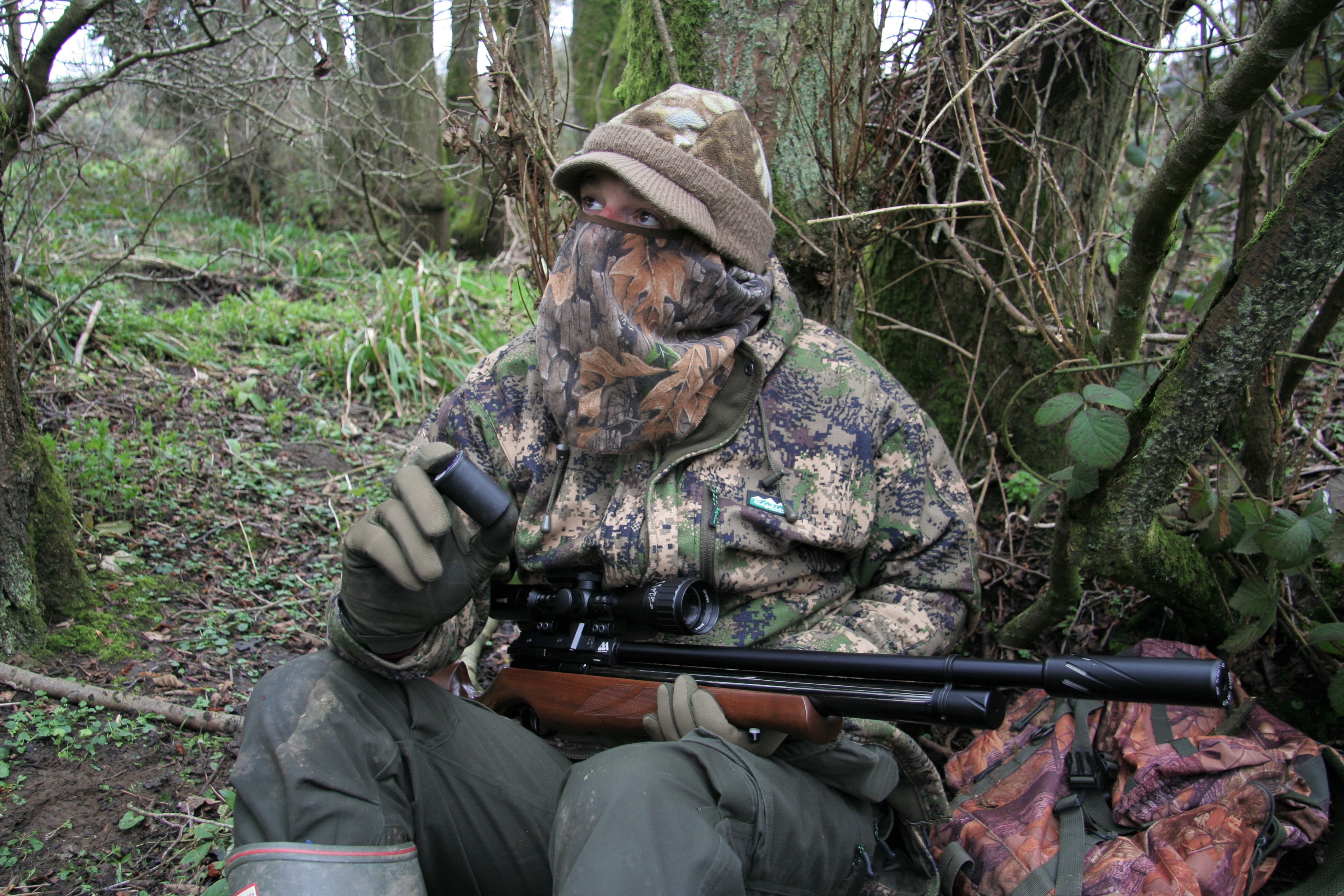
With no hide net, Mat put on a camouflage head net and settled in the natural cover
Ruse
With the decoys in place, I settled down among the undergrowth and put on a camouflage head net to keep my face hidden from incoming birds. The decoy ruse worked faster than I’d expected but it wasn’t magpies that were taking an interest. Crows usually circle for a while before dropping down for a closer look, but the first visitor came in on a straight course before pitching into the branches of a nearby oak.
A carrion crow is comparatively large quarry for a sub-12ft/lb air rifle but this one was comfortably within range at about 30m. My sitting position made for a steady shot and the cross-hairs soon came to rest on its head. I squeezed off the shot and the pellet found its mark, connecting with a crack and sending the bird plummeting from its perch.
Before I had even finished reloading, another crow swooped into the same tree and settled on a branch no more than 5ft from where the previous one had landed. I can only imagine that it had witnessed its mate’s demise and decided to drop in for a closer look. It proved to be a costly mistake and the curious crow swiftly met with a similar end.
Both birds had dropped into dense undergrowth. With no risk of them spooking other birds, I decided to sit tight rather than breaking cover to retrieve them.
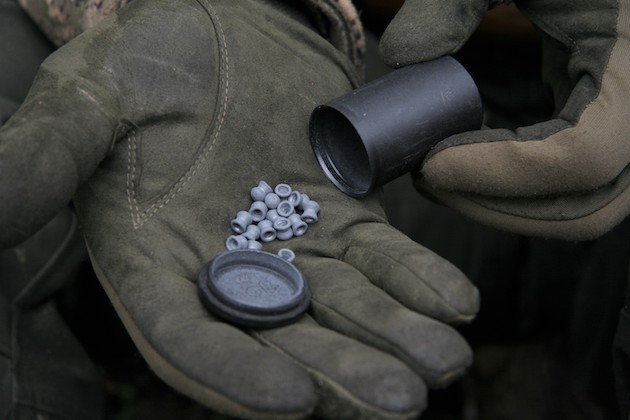
Mat’s magpie caller is a simple rattle made by tipping a few airgun pellets into an old film cannister.
It probably wouldn’t have made much difference, as the action came to a distinct lull. I whiled away the next half-hour or so watching treecreepers scampering around in the branches. All the while, I could still hear the distant chatter of magpies. Eager to draw their attention to my decoy arrangement, I decided to have a go at calling them in. My magpie caller is a simple rattle made by placing a dozen airgun pellets into an old camera film cannister. When shaken it sounds a lot like the clacking call of an agitated magpie.
I only use it as a last resort when hunting with an airgun rifle, as I have found that it sometimes does a better job of alerting birds to my whereabouts than that of the decoys. Trying to mimic the sounds of the distant magpies, I gave the caller a couple of shakes then waited for a few minutes in the hope that it might have steered the black-and-white bandits in my direction.
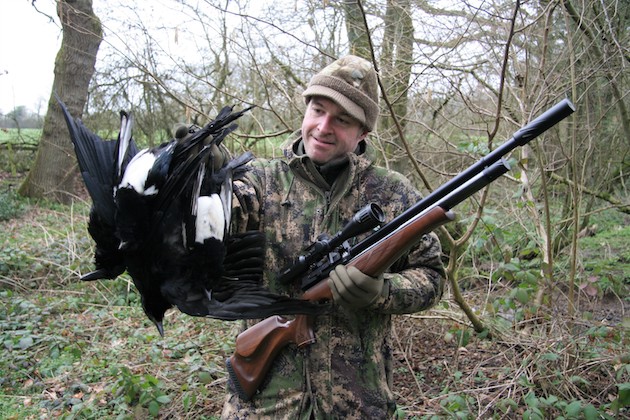
Proof of the little owl decoy’s pulling power and four less corvids wreaking havoc in the woods
Brilliant response to the decoys
I have no idea whether it made
any significant difference, but
I did manage to account for a pair
of magpies over the next hour. Both birds responded brilliantly to the decoys and came piling in towards them, rather than hanging back like the crows.
I also managed to miss a spectacularly easy shot at a magpie that was no more than 20m away.
I have no idea what went wrong but the lucky corvid escaped unscathed.
Which are the best air rifles for shooting rabbits?
Air rifles: I was rabbiting recently with a .177 air rifle, but I couldn’t hit anything. Is this calibre powerful…
Picking off four corvids with an air rifle is something of a result and, though I’ve made far bigger bags, especially with the shotgun, I’m pleased to think there will be fewer of them plundering this year’s nests. Of course, my contribution will seem meagre when compared with the keeper’s results with his Larsen traps, but they all count.
Related Articles
Get the latest news delivered direct to your door
Subscribe to Shooting Times & Country
Discover the ultimate companion for field sports enthusiasts with Shooting Times & Country Magazine, the UK’s leading weekly publication that has been at the forefront of shooting culture since 1882. Subscribers gain access to expert tips, comprehensive gear reviews, seasonal advice and a vibrant community of like-minded shooters.
Save on shop price when you subscribe with weekly issues featuring in-depth articles on gundog training, exclusive member offers and access to the digital back issue library. A Shooting Times & Country subscription is more than a magazine, don’t just read about the countryside; immerse yourself in its most authoritative and engaging publication.






